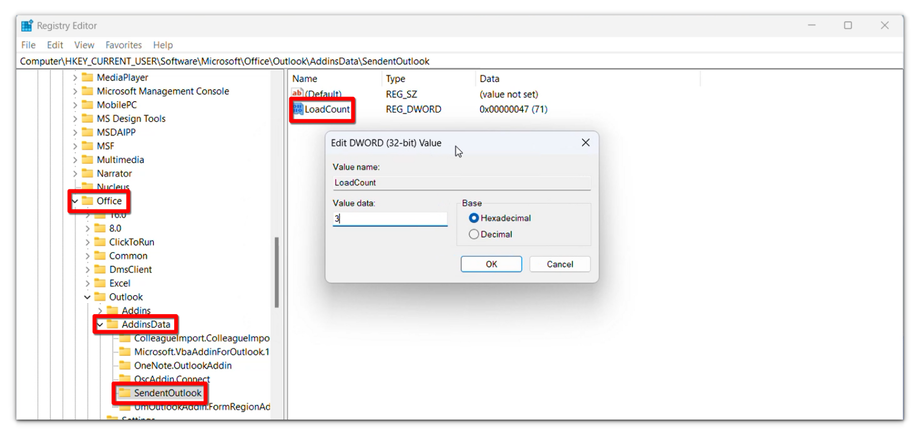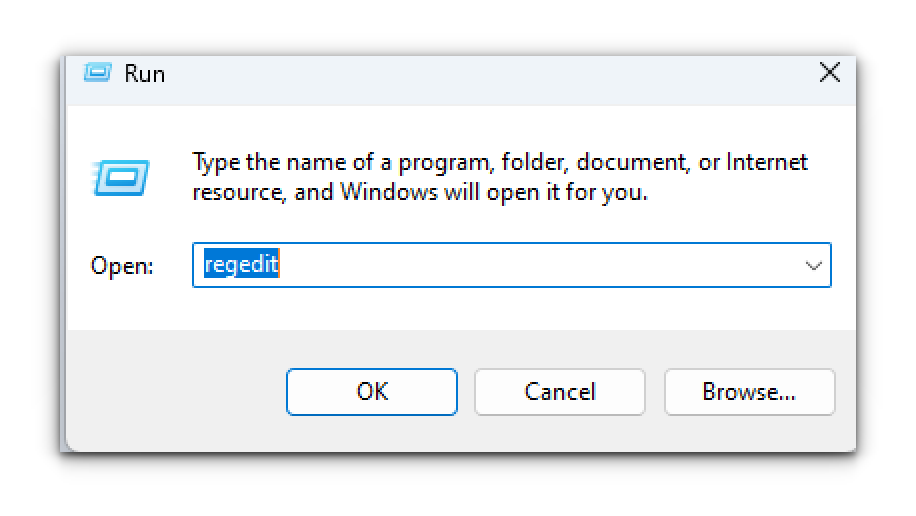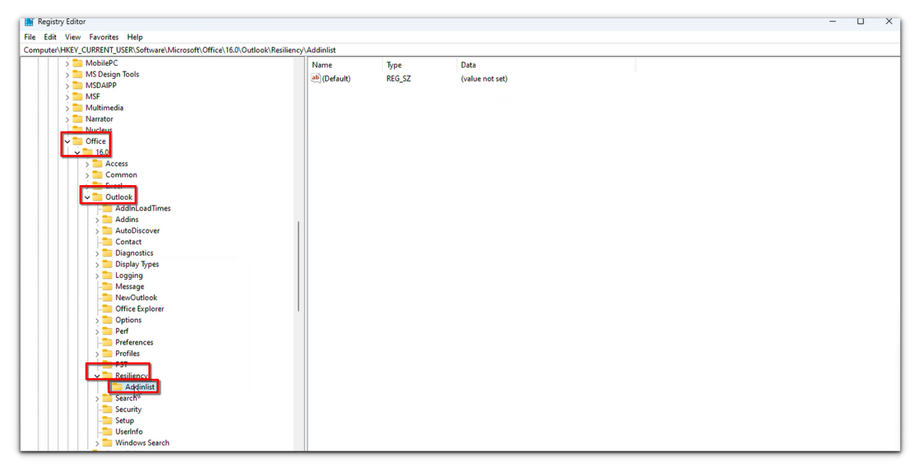What to Do if Sendent for Outlook (Windows) Keeps Disabling
Some clients may experience an issue where the Sendent for Outlook plugin keeps disabling on start-up. This can be due to performance issues during Outlook start-up or a previous crash of Outlook. This guide provides steps to diagnose and resolve this behavior by modifying a registry entry.
Understanding the Issue
In Outlook, there is a mechanism that lists add-ins and determines whether they should be disabled at start-up. If the Sendent Outlook plugin is repeatedly disabled, it may be due to its inclusion on this list.
Before making any changes, make sure Microsoft Outlook is closed and not running in the background. You can check for background processes in Task Manager (Ctrl + Alt + Delete).
Solution
As an administrator, you can modify the registry entry to resolve this behavior. Follow these steps:
Step 1: Verify and Modify the Registry Entry
1. Open Registry Editor by pressing Windows + R, type regedit, and press Enter.
2. Click on the HKEY_CURRENT_USER option and click on Sofware from the options.
3. Under the Software options click Microsoft.
4. Under Microsoft, click on the Office option and then click on Outlook.
5. Under the Outlook section, click on AddinsData and click on SendentOutlook
6. Look for the REG_DWORD entry named LoadBehavior.
7. Modify the LoadBehavior value. If the value is not 3, right-click on LoadBehavior and select Modify. Set the value data to 3.
8. Click Ok and close Registry Editor once done.
Step 3: Restart Outlook
After modifying the registry, restart Outlook. The Sendent Outlook plugin should now load correctly at start-up.
Automating the Change with Group Policy
If you are an administrator managing multiple users, you can push this registry change using Group Policy. Here is a reference chart.
VSTO Add-in LoadBehavior Values
| Value (Decimal) | VSTO Add-in Status | VSTO Add-in Load Behavior | Description |
|---|---|---|---|
| 0 | Unloaded | Don't load automatically | The application never tries to load the VSTO Add-in automatically. The user can try to manually load it. |
| 1 | Loaded | Don't load automatically | The application never tries to load the VSTO Add-in automatically. The user can try to manually load it. |
| 2 | Unloaded | Load at startup | The application doesn't try to load the VSTO Add-in automatically. The user can manually load it. |
| 3 | Loaded | Load at startup | The application tries to load the VSTO Add-in when it starts. This is the default value for a VSTO Add-in. |
| 8 | Unloaded | Load on demand | The application doesn't try to load the VSTO Add-in automatically. It can be loaded manually or programmatically. |
| 9 | Loaded | Load on demand | The VSTO Add-in will be loaded only when required, such as when a user selects a UI element using its functionality. |
| 16 | Loaded | Load first time, then load on demand | The VSTO Add-in is loaded on demand after the first run. The UI elements load next time the user runs the application. |
Please refer to this guide for more details on Registry entries for VSTO Add-ins
Enforcing Outlook add-in always enabled
As an administrator, you can enforce the Sendent Outlook add-in to always be enabled. This setting overrides any user interactions with the add-in and prevents users from disabling it.
Follow these steps to access the registry and enforce this setting:
Step 1: Open the Registry Editor
- Press the Windows key + R to open the Run dialog box.
- Type
regeditand press Enter. - If prompted by User Account Control, click Yes to allow the Registry Editor to make changes to your device.
Step 2: Navigate to the Target Registry Key
- In the Registry Editor, navigate to the following path:
HKEY_CURRENT_USER\Software\Policies\Microsoft\Office\16.0\Outlook\Resiliency\AddinList
2. Under the Microsoft section click the Office tab and then navigate as shown in the steps in the image below. Office > 16.0 > Outlook > Resiliency > Addinlist
Step 3: Create Missing Keys (If Necessary)
- If the
Resiliencyand/orAddinListkeys do not exist, you will need to create them:- Right-click on the
Outlookkey. - Select New > Key.
- Name the new key
Resiliency.
- Right-click on the
-
-
- Right-click on the
Resiliencykey. - Select New > Key.
- Name the new key
AddinList.
- Right-click on the
-
Step 4: Create the Required String Value
- Right-click on the
AddinListkey. - Select New > String Value.
- Name the new string value
SendentOutlook. - Double-click on
SendentOutlookto edit its value.
5. In the Value data field, enter 1.
6. Press the OK button to save the changes.
Step 5: Close the Registry Editor
- Close the Registry Editor.
- Restart Outlook so the changes take effect.











